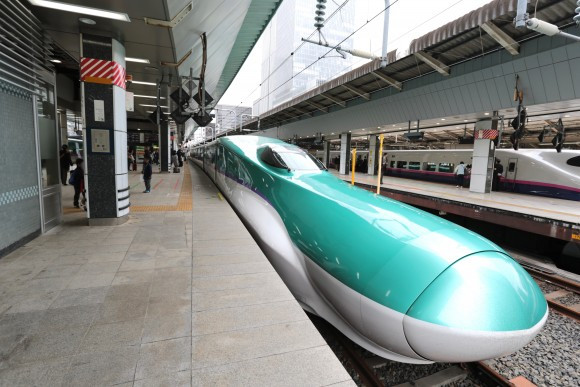
Just how far can you go before you run out of Shinkansen?
Thanks to a new extension, Japan’s Shinkansen train network now stretches all the way from the northern island of Hokkaido to Kagoshima, the southern tip of Kyushu, the southernmost of the country’s four main islands. So to take advantage of this new range of bullet train mobility, we decided to ride the high-speed rails all the way from one end to the other.
Our journey began at 6:35 in the morning, when we stepped from the platform of Shin Hakodate Hokuto Station into a car of the Hayabusa super-express.
Because of the early hour, there was only one other passenger sitting in the same carriage as us. Having the place almost entirely to ourselves made the ordinarily roomy Shinkansen seem all the more spacious.
One of the nicest things about the bullet train are the plentiful electrical outlets, meaning you can easily charge up your phone, camera battery, or laptop.
▼ Our mobile office is all set up.
Since Shin Hakodate Hokuto is the only Shinkansen station on Hokkaido, before very long we passed through the underwater Senkan Tunnel, coming out on Japan’s main island of Honshu where the train made its first stop at Okutsugaru Imabetsu in Aomori Prefecture at 7:25.
Hardly anyone got on here either, but 16 minutes later the train pulled into Shin Aomori Station, where the train finally started to really fill up with passengers.
Since we got on the train at 6:35, we hadn’t had time to eat breakfast, but part of the fun of riding the Shinkansen is the food sold by vendors who walk up and down the aisle. So at eight o’clock, we got ourselves a 1,000-yen (US$9.35) bento boxed lunch.
Many of the Shinkansen bento make use of regional specialties from the regions the train passes through, and our boxed lunch was filled with the seafood that Hokkaido is famous for, with salmon, crab, scallops, and salmon and herring roe all part of the mix.
We also got a box of donut sticks for 800 yen, because you can’t expect us to have breakfast without dessert, can you?
At 9:29, the train made a brief stop in Sendai, the capital of Miyagi Prefecture…
…and at 11:04, we were in the capital of Japan itself, Tokyo.
While the Shinkansen network goes all the way from Hokkaido to Kyushu, there isn’t any single train that makes the complete run. With Tokyo being the last stop for the Hayabusa, we said goodbye to one Shinkansen and hello to another, as we hopped on a Nozomi super-express bound for Osaka, which got underway at 11:23.
One of the shortest gaps between Shinkansen-serviced stations is the Tokyo to Shin Yokohama stretch, and we were at the latter at 11:41, less than 20 minutes after departing Tokyo Station.
At 12:30, our stomachs were starting to growl, so it was time for another 1,000-yen bento!
This time, we went with something a little heartier, choosing a boxed lunch with miso pork cutlet, fried shrimp, anago (saltwater eel), and yuba (tofu skin).
The first of those mouth-watering items is a favorite of the people of Nagoya, while Kyoto is known for the last, and we went through both cities while riding the Nozomi.
▼ The train reached Nagoya at 1:02 in the afternoon…
▼ …and Kyoto at 1:38.
And for dessert number two, ningyoyaki cakes, Tokyo’s representative traditional sweets, in the shape of little bullet trains.
▼ 650 yen gets you a pack of seven.
The last stop for our train was Shin Osaka Station, so 1:53 we transferred again this time to the enchantingly named Sakura super-express, which left six minutes later.
After just about two hours, at 3:57 we arrived at Shin Yamaguchi Station, the final stop on Honshu.
At 4:17, we came to Kokura, the first Sakura station on Kyushu…
…followed by Kyushu’s largest station, Hakata, (which serves the city of Fukuoka) at 4:34.
Rapidly nearing the end of our trip, at five o’clock we got ourselves a dinner bento, which, once again, cost us 1,000 yen.
This one included grilled salmon, fried asparagus cheese rolls, Kasgoshima kuro buta pork, and ebi meshi, a rice and shrimp dish from Okayama Prefecture. The whole thing was filling enough that we were able to show some admirable willpower in not getting a third dessert for the day.
As we happily digested our meal, the train reached Kumamoto at 5:14…
…and at 6:01, the Sakura slowed to a stop, the doors whooshed open, and we were finally at Kagoshima Chuo, as far south as you can go by Shinkansen.
Our total travel time was 11 hours and 26 minutes, and the collection of tickets involved cost us 48,220 yen. Making the trip from Hokkaido to Kyushu by plane is both faster and cheaper, but if you’re a rail fan, the end-to-end Shinkansen route is a memorable way to see the country from ground-level, and the bento really are far tastier than airplane food.
Images ©RocketNews24
[ Read in Japanese ]

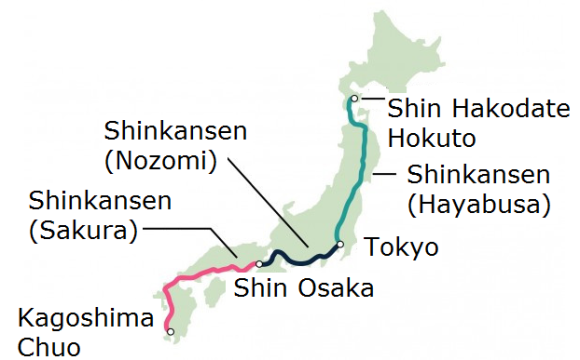
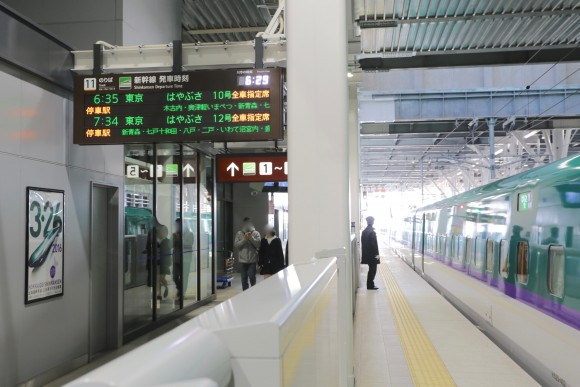
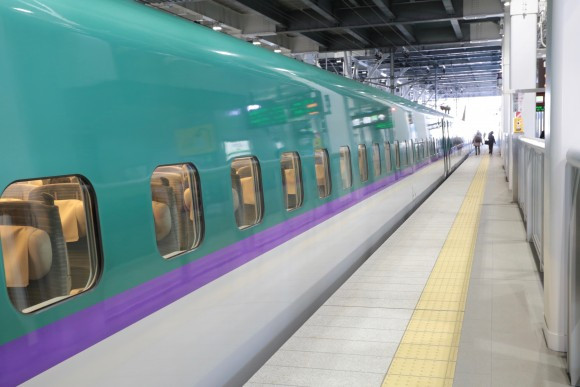
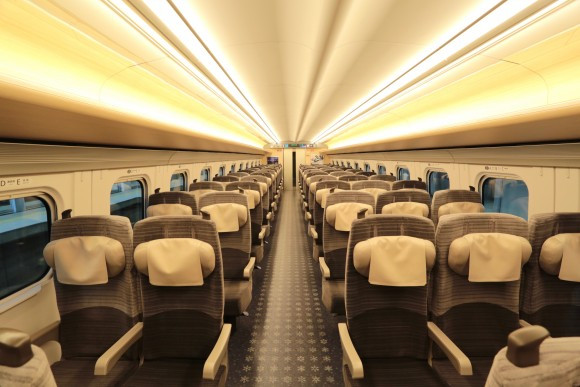
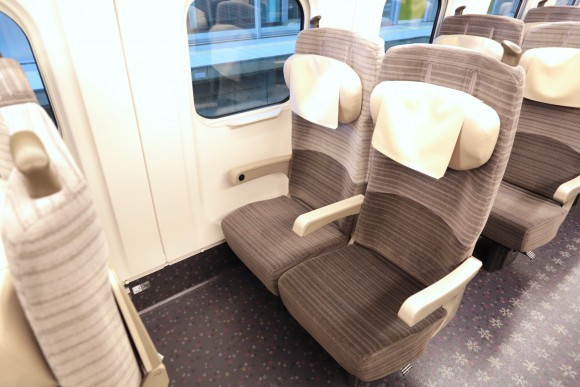
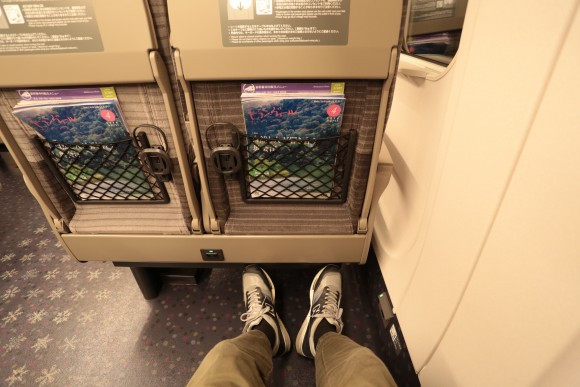
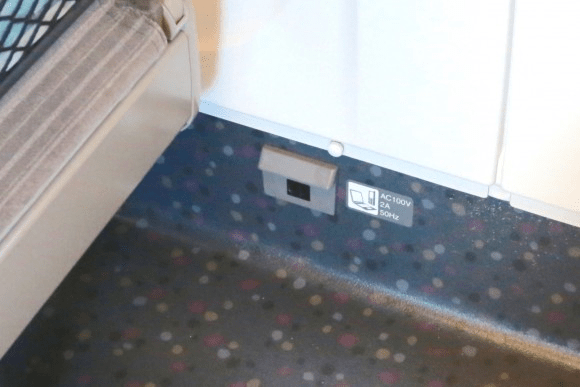
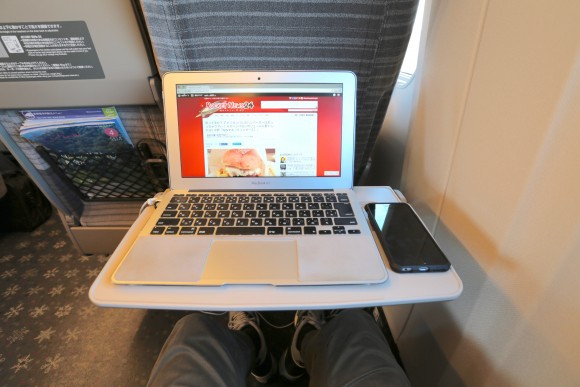
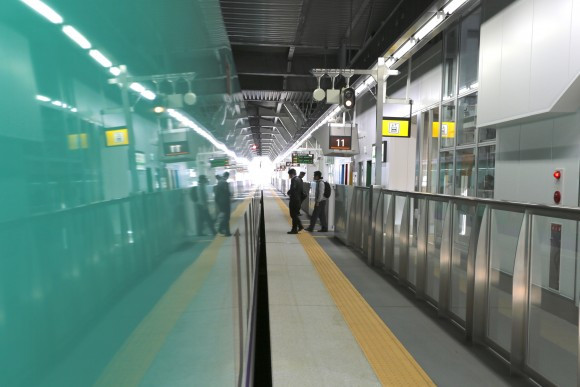
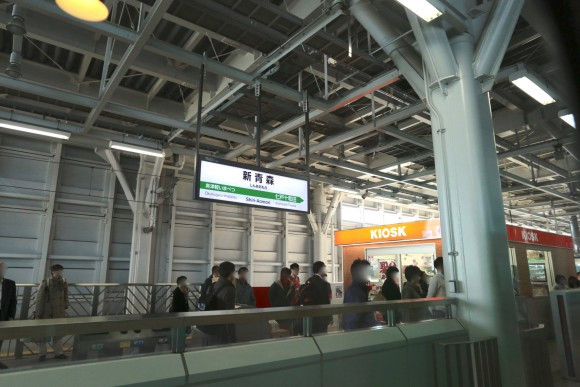
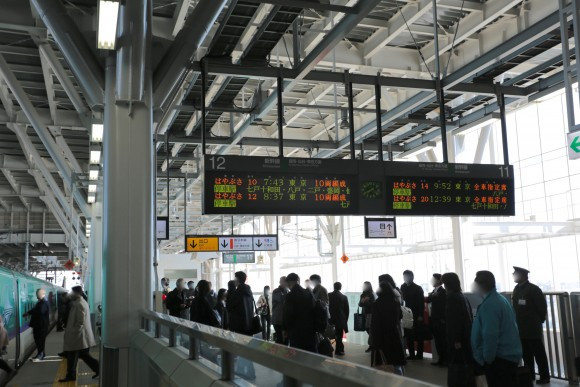
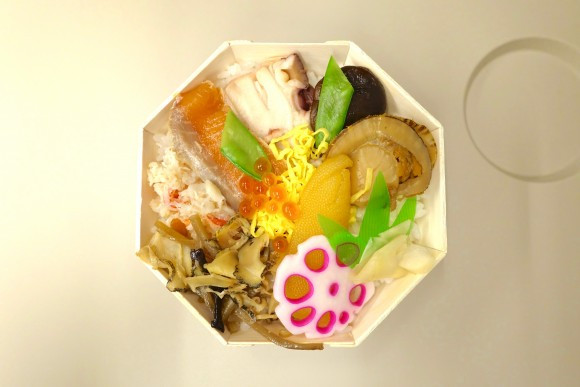
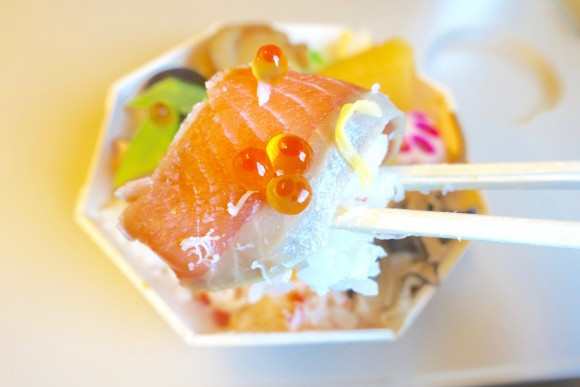
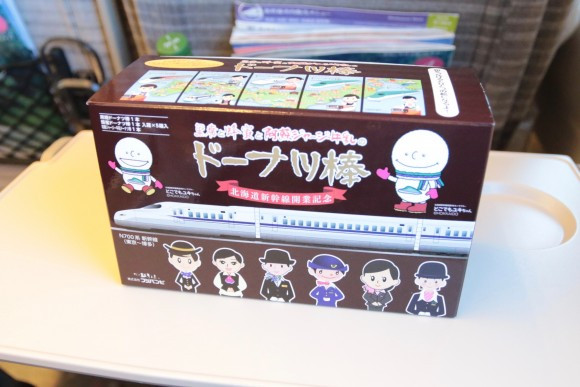
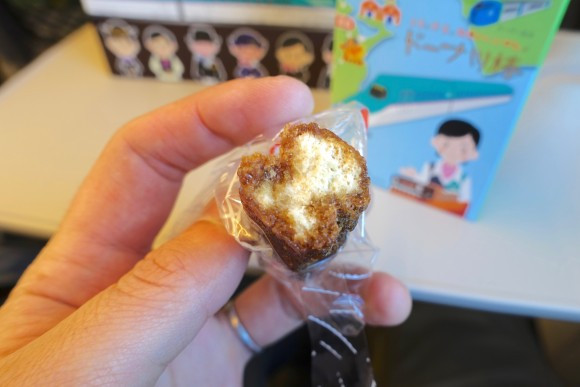
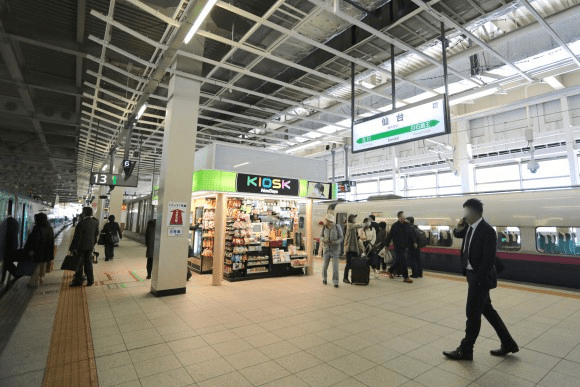
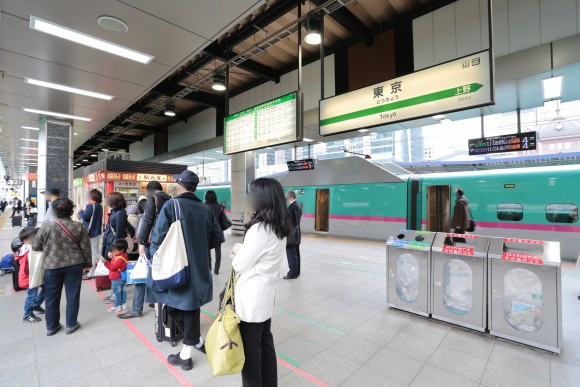
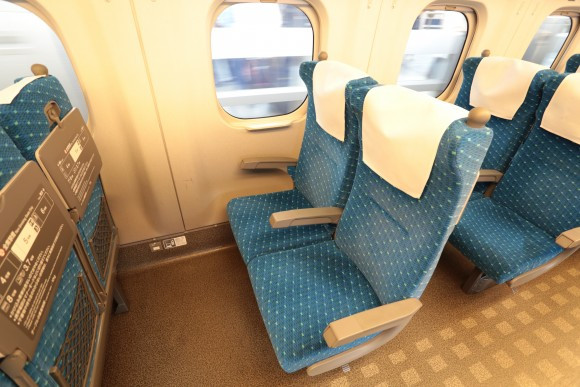
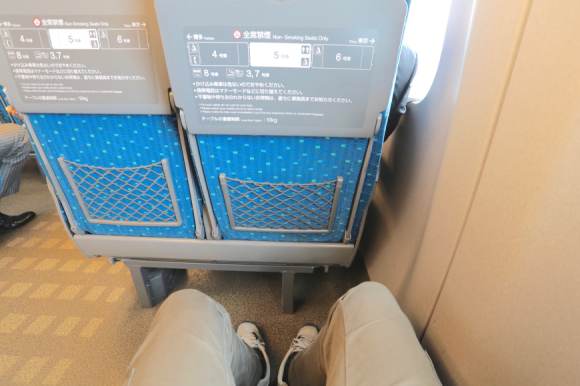
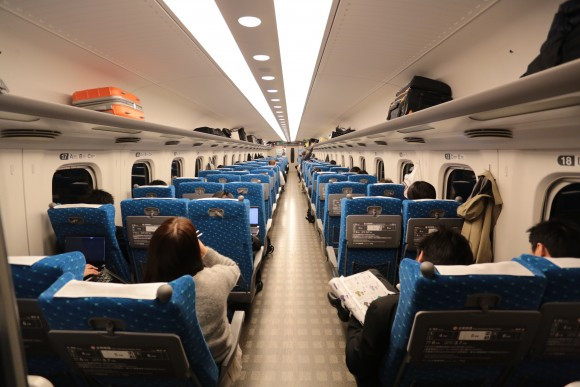
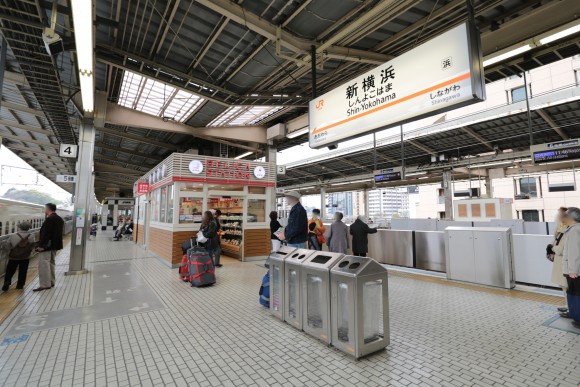
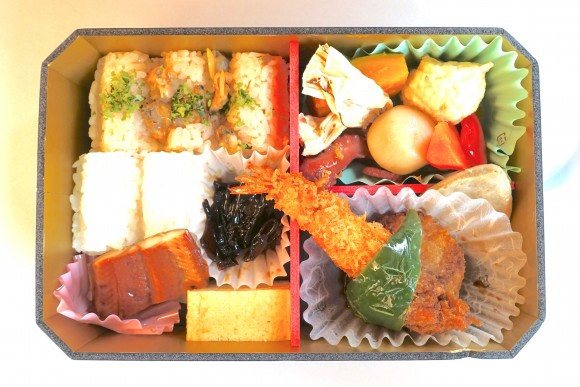
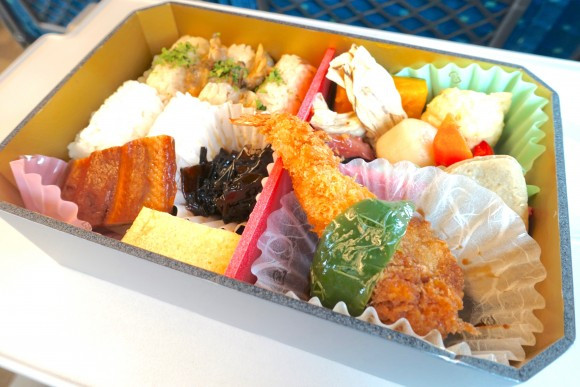
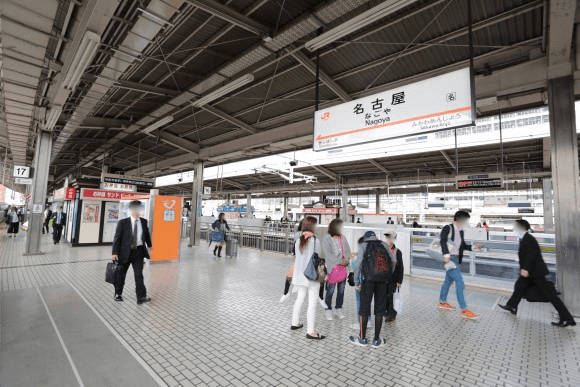
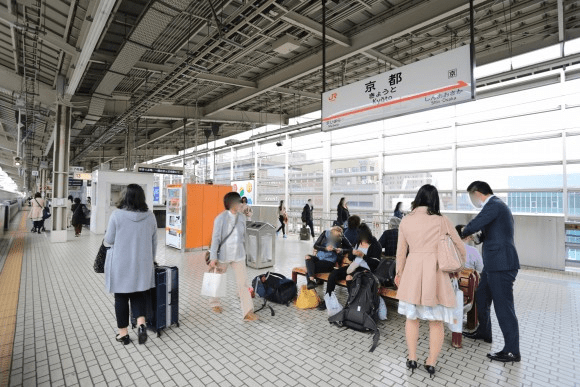
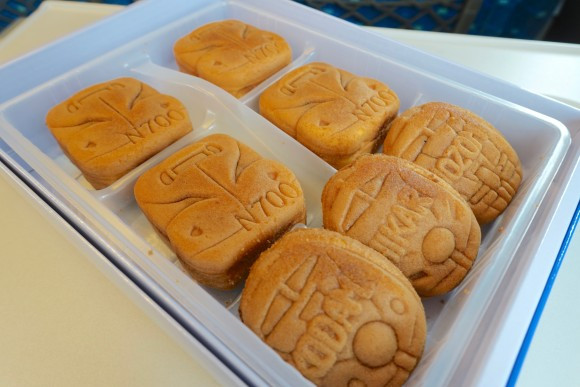
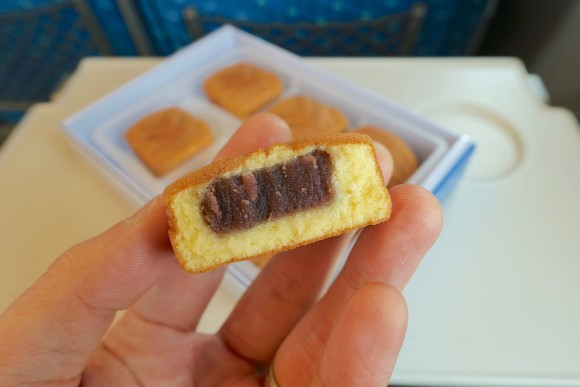
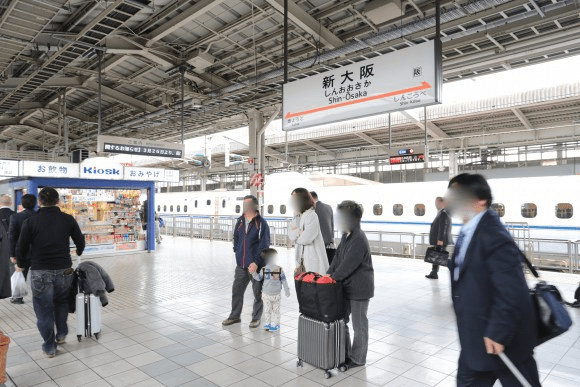
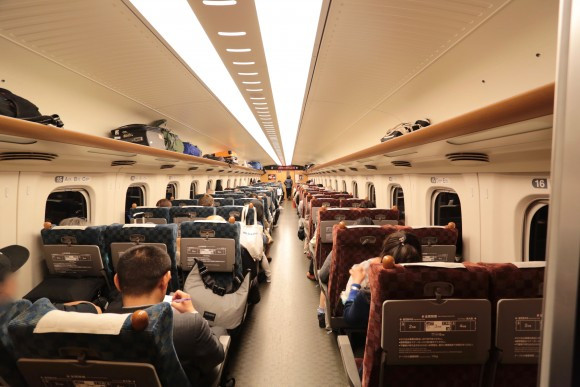
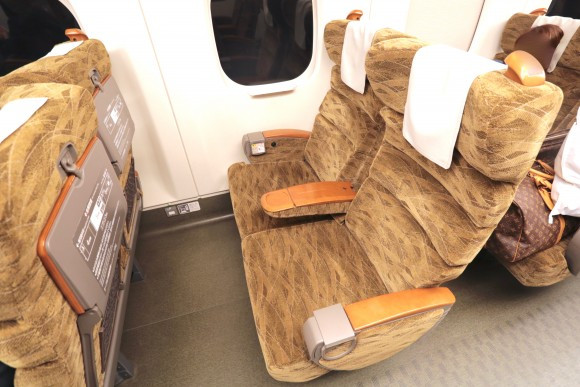
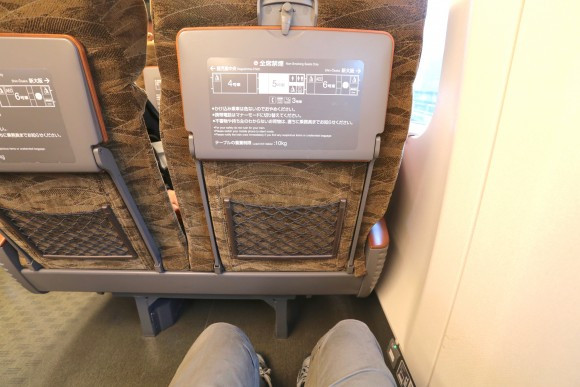
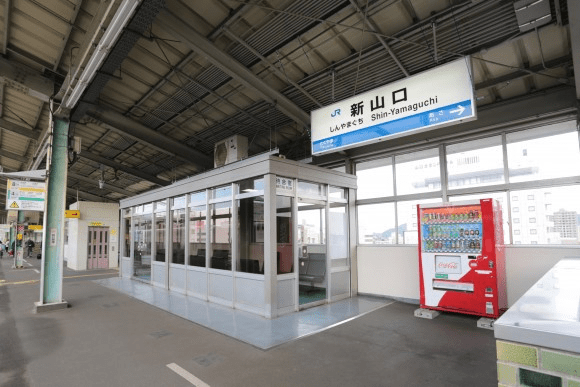
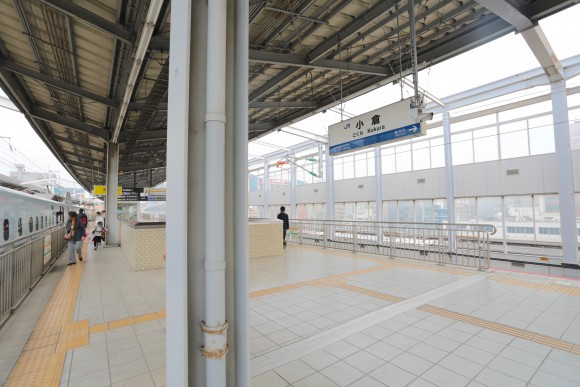
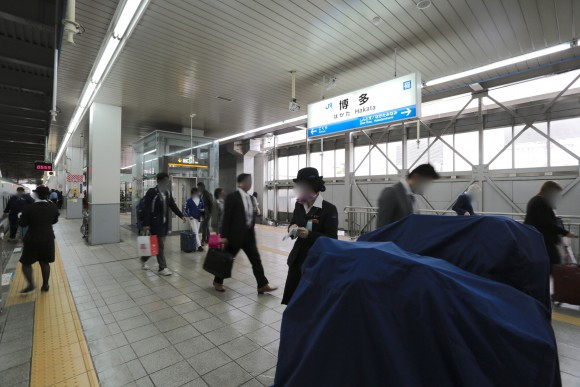
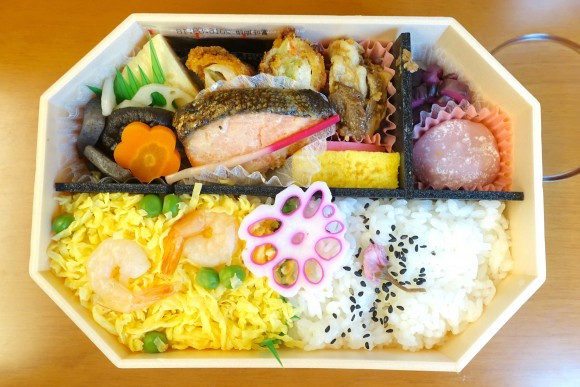
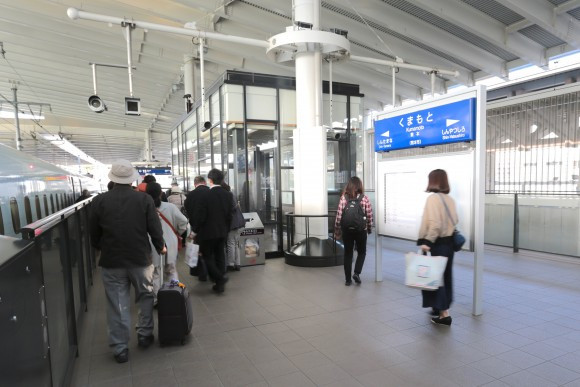
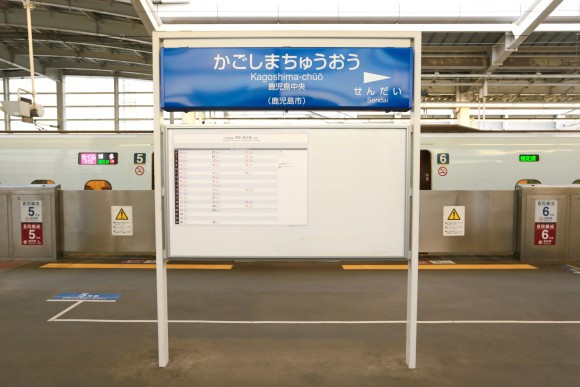
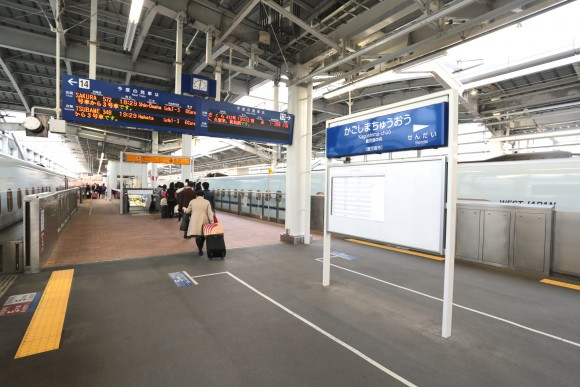
 Shinkansen will require reservations for large suitcases, charge penalty fees for those without
Shinkansen will require reservations for large suitcases, charge penalty fees for those without New Japan rail pass gives you a week of free rides in a huge space to chase the cherry blossoms
New Japan rail pass gives you a week of free rides in a huge space to chase the cherry blossoms Crazy cosplay team dresses up as Japan’s Shinkansen bullet train for an important reason【Videos】
Crazy cosplay team dresses up as Japan’s Shinkansen bullet train for an important reason【Videos】 Japan is getting a Disney Mickey Mouse Shinkansen bullet train this spring!
Japan is getting a Disney Mickey Mouse Shinkansen bullet train this spring! Japan’s West Kyushu Shinkansen bullet train service to Nagasaki is set to open this fall
Japan’s West Kyushu Shinkansen bullet train service to Nagasaki is set to open this fall Japan’s new difficult-to-drink-from beer glass protects your liver, but it’s a brutal experience
Japan’s new difficult-to-drink-from beer glass protects your liver, but it’s a brutal experience Demon Slayer: Kimetsu no Yaiba gets new roller coaster attractions and food at Universal Studios Japan
Demon Slayer: Kimetsu no Yaiba gets new roller coaster attractions and food at Universal Studios Japan How to order snacks on a Shinkansen bullet train in Japan
How to order snacks on a Shinkansen bullet train in Japan New samurai glasses are Japan’s latest weird must-have souvenir
New samurai glasses are Japan’s latest weird must-have souvenir Hello, cosmetics! Clinique teams up with Hello Kitty this summer for first-time collaboration
Hello, cosmetics! Clinique teams up with Hello Kitty this summer for first-time collaboration High-fashion Totoro cuddle purse is like an elegant stroll in the forest【Photos】
High-fashion Totoro cuddle purse is like an elegant stroll in the forest【Photos】 Burger King Japan suddenly adds Dr. Pepper and Dr. Pepper floats to its menu nationwide
Burger King Japan suddenly adds Dr. Pepper and Dr. Pepper floats to its menu nationwide New Nintendo Lego kit is a beautiful piece of moving pixel art of Mario and Yoshi【Photos】
New Nintendo Lego kit is a beautiful piece of moving pixel art of Mario and Yoshi【Photos】 Japan’s cooling body wipe sheets want to help you beat the heat, but which work and which don’t?
Japan’s cooling body wipe sheets want to help you beat the heat, but which work and which don’t? Nintendo history you can feel – Super NES, N64, and GameCube controllers become capsule toys
Nintendo history you can feel – Super NES, N64, and GameCube controllers become capsule toys “The most Delicious Cup Noodle in history” – Japan’s French Cup Noodle wins our heart【Taste test】
“The most Delicious Cup Noodle in history” – Japan’s French Cup Noodle wins our heart【Taste test】 Starbucks releases a cute Frappuccino and Unicorn Cake…but not in Japan
Starbucks releases a cute Frappuccino and Unicorn Cake…but not in Japan Kyoto Tower mascot termination reveals dark side behind cute Japanese characters
Kyoto Tower mascot termination reveals dark side behind cute Japanese characters McDonald’s Japan’s Soft Twist Tower: A phantom ice cream only sold at select branches
McDonald’s Japan’s Soft Twist Tower: A phantom ice cream only sold at select branches Yabai Ramen: What makes this Japanese ramen so dangerous?
Yabai Ramen: What makes this Japanese ramen so dangerous? Finally! Nintendo Japan expands Switch 8-bit controller sales to everybody, Online member or not
Finally! Nintendo Japan expands Switch 8-bit controller sales to everybody, Online member or not Japanese government wants to build luxury resorts in all national parks for foreign tourists
Japanese government wants to build luxury resorts in all national parks for foreign tourists To combat declining birth rate, Japan to begin offering “Breeding Visas” to foreigners
To combat declining birth rate, Japan to begin offering “Breeding Visas” to foreigners 10 things you should buy at 7-Eleven in Japan
10 things you should buy at 7-Eleven in Japan Studio Ghibli releases anime heroine cosplay dresses that are super comfy to wear
Studio Ghibli releases anime heroine cosplay dresses that are super comfy to wear Woman charged for driving suitcase without a license in Osaka
Woman charged for driving suitcase without a license in Osaka Studio Ghibli unveils My Neighbour Totoro miniature house model
Studio Ghibli unveils My Neighbour Totoro miniature house model Kyoto experiencing problems with foreign tourists not paying for bus fares, but not on purpose
Kyoto experiencing problems with foreign tourists not paying for bus fares, but not on purpose Fighting mild hunger with a Japanese soda that turns into jelly in the stomach【Taste test】
Fighting mild hunger with a Japanese soda that turns into jelly in the stomach【Taste test】 Studio Ghibli’s Howl’s Moving Castle tapestry unveiled in Japan for first time
Studio Ghibli’s Howl’s Moving Castle tapestry unveiled in Japan for first time McDonald’s new Happy Meals offer up cute and practical Sanrio lifestyle goods
McDonald’s new Happy Meals offer up cute and practical Sanrio lifestyle goods Sales of Japan’s most convenient train ticket/shopping payment cards suspended indefinitely
Sales of Japan’s most convenient train ticket/shopping payment cards suspended indefinitely Sold-out Studio Ghibli desktop humidifiers are back so Totoro can help you through the dry season
Sold-out Studio Ghibli desktop humidifiers are back so Totoro can help you through the dry season Japanese government to make first change to romanization spelling rules since the 1950s
Japanese government to make first change to romanization spelling rules since the 1950s Foreigner’s request for help in Tokyo makes us sad for the state of society
Foreigner’s request for help in Tokyo makes us sad for the state of society Ghibli founders Toshio Suzuki and Hayao Miyazaki contribute to Japanese whisky Totoro label design
Ghibli founders Toshio Suzuki and Hayao Miyazaki contribute to Japanese whisky Totoro label design Doraemon found buried at sea as scene from 1993 anime becomes real life【Photos】
Doraemon found buried at sea as scene from 1993 anime becomes real life【Photos】 Tokyo’s most famous Starbucks is closed
Tokyo’s most famous Starbucks is closed Princesses, fruits, and blacksmiths: Study reveals the 30 most unusual family names in Japan
Princesses, fruits, and blacksmiths: Study reveals the 30 most unusual family names in Japan Hello Kitty Shinkansen Cafe: A delicious stop on the most kawaii bullet train in Japan
Hello Kitty Shinkansen Cafe: A delicious stop on the most kawaii bullet train in Japan Shinkansen makes unscheduled stop as elderly man whacks other passenger in the head with phone
Shinkansen makes unscheduled stop as elderly man whacks other passenger in the head with phone Tokyo farewells Japan’s only double-decker Shinkansen with a special escalator at the station
Tokyo farewells Japan’s only double-decker Shinkansen with a special escalator at the station Japan’s Shinkansen bullet trains to remove all onboard payphones
Japan’s Shinkansen bullet trains to remove all onboard payphones Japan Rail now accepting suggestions for how to use a car on the Nozomi bullet train in March 2022
Japan Rail now accepting suggestions for how to use a car on the Nozomi bullet train in March 2022 Nozomi Shinkansen bullet train abolishes low-priced unreserved tickets during peak travel seasons
Nozomi Shinkansen bullet train abolishes low-priced unreserved tickets during peak travel seasons Free Shinkansen tickets for kids travelling with parents during special JR promotion
Free Shinkansen tickets for kids travelling with parents during special JR promotion A guide to riding the Shinkansen bullet train with a terrible-twos kid
A guide to riding the Shinkansen bullet train with a terrible-twos kid Japan’s new luxury sightseeing train will show you part of the country most foreigners never see
Japan’s new luxury sightseeing train will show you part of the country most foreigners never see Stylish black Shinkansen, decorated with fireworks, spotted on the rails of Japan 【Photos】
Stylish black Shinkansen, decorated with fireworks, spotted on the rails of Japan 【Photos】 Faster! Japan’s Shinkansen to get speed boost along Tohoku route
Faster! Japan’s Shinkansen to get speed boost along Tohoku route Tokaido Shinkansen ending in-train food/drink sales for all non-first-class-passenger cars
Tokaido Shinkansen ending in-train food/drink sales for all non-first-class-passenger cars Lotteria serves up Shinkansen H5 Series Set to mark inaugural bullet train service to Hokkaido
Lotteria serves up Shinkansen H5 Series Set to mark inaugural bullet train service to Hokkaido Shinkansen driver disciplined for taking poop break while train was going 150 kilometers an hour
Shinkansen driver disciplined for taking poop break while train was going 150 kilometers an hour Japan’s real and anime world technological icons combine with this Shinkansen transforming robot
Japan’s real and anime world technological icons combine with this Shinkansen transforming robot
Leave a Reply